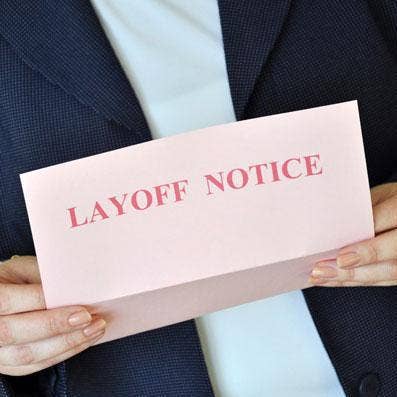40,000 Tech Layoffs: Amazon Vs. Google Vs. Microsoft
CRN breaks down the who, where and why regarding Amazon’s 18,000, Google’s 12,000, and Microsoft’s 10,000 layoff rounds.

Three of the largest technology conglomerates in the world recently announced massive layoffs totaling more than 40,000 employees from Amazon, Microsoft and Google.
In January alone, Amazon announced 18,000 employees layoffs, Microsoft unveiled 10,000 employees will be terminated, and Google said it will cut 12,000 employees.
Amazon CEO Andy Jassy, Microsoft CEO Satya Nadella and Google CEO Sundar Pichai all blamed the massive layoffs on hiring too many people over the past several years as IT demand skyrocketed due to the COVID-19 pandemic, while citing a customer spending slowdown in the current market.
The follow-up questions become: who, when, where and why? And how much impact will these layoffs have inside these companies’ technology businesses such as Amazon Web Services (AWS), Google Cloud and Microsoft Azure?
CRN breaks down these answers as well as the boldest remarks from each company’s CEO.
[Related: AWS Not Impacted By Amazon’s 18,000 Layoffs]
IT Layoffs Happening Everywhere
Of course, these the three tech giants aren’t the only ones being hit with layoffs. A slew of other IT companies announced large layoffs in recent months.
This month, Cloud Software Group—the parent company of Citrix and Tibco—confirmed it was laying off 15 percent of its total workforce, or around 2,000 employees.
Other large IT companies that announced layoffs this month include big data standout Informatica, which will terminate 7 percent of its workforce or 450 employees, as well as cloud communications provider 8x8, which will lay off 155 employees or approximately 7 percent of its total workforce.
IT layoffs started affecting technology companies of all shapes and sizes in late 2022. Tech companies like Cisco, Salesforce, HP Inc., Intel, Elastic, Aqua Security, AvePoint and N-able have all announced layoffs in 2022.
Here are five important things to know the technology layoffs at Amazon and AWS, Google and Google Cloud, and Microsoft that all customers and partners should know.

Google, Microsoft, Amazon Layoffs: By The Numbers
Google Worldwide Employees: 187,000 employees
Percentage Of Google Employees Laid Off: 6 percent
Google had nearly 187,000 employees as of September 2022, according to a Google regulatory filing, up from 150,000 in September 2021. With 12,000 layoffs ahead, this means Google is laying off approximately 6 percent of its workforce. Google said it has already sent out messages to employees in the U.S. who are being laid off with the process taking longer in other countries due to local laws and practices.
Microsoft Worldwide Employees: 221,000
Percentage Of Microsoft Employees Laid Off: 4.5 percent
The 10,000 layoffs at Microsoft represent approximately 4.5 percent of its global employee base of around 221,000 people as of June 2022. The company began notifying some employees last week, with job eliminations occurring through the end of its third fiscal quarter 2023, which ends March 31.
Amazon Worldwide Employees: 1.5 million
Percentage Of Amazon Employees Laid Off: 1.25 percent
Amazon had 1.5 million worldwide employees as of September 2022, which includes the company’s massive warehouse and shipping staff. Amazon’s 18,000 employees being let go will be notified in the coming weeks, although many have already been terminated following November’s layoff round.

Who Exactly Is Being Laid Off?
Microsoft, Google and Amazon all made employee cuts across various business units and organizations.
For Amazon, the 18,000 layoffs were mostly in its Amazon Stores and PXT (People, Experience and Technology] organizations. PXT is Amazon’s human resources department. CRN learned that AWS employees would not be significantly impacted by its parent company’s round of layoffs. However, sources did tell CRN that AWS currently is on a hiring freeze.
Google employees have been laid off across several key business units including Google Cloud, Chrome and its Area 120 unit. Some employees working on the company’s artificial intelligence programs were also laid off, according to reports. “[The layoffs] cut across Alphabet, product areas, functions, levels and regions,” said Google’s CEO. Many Google employees who were laid off took to LinkedIn to let their social network know of their termination, which included software engineers, user experience (UX) professionals and technical managers and salespeople from Google Cloud.
On the Microsoft front, little information was officially released by the software giant. Microsoft said it will eliminate roles in some areas, while it will continue to hire in “key strategic areas,” although the company did not specify the areas it plans to hire. However, CRN has learned that Microsoft employees from many different areas were let go, including marketing, advertising and in HoloLens, according to social media posts.

Why Layoffs Were Made: ‘We Hired For A Different Economic Reality’
Microsoft, Google and Amazon all held onto a common theme when announcing their layoffs: hiring too many people over the past several years when demand jumped during the COVID-19 pandemic.
“As we saw customers accelerate their digital spend during the pandemic, we’re now seeing them optimize their digital spend to do more with less,” said Microsoft CEO Satya Nadella. “We’re also seeing organizations in every industry and geography exercise caution as some parts of the world are in a recession and other parts are anticipating one.”
Microsoft is expecting a modest 2 percent year-over-year growth for its second fiscal quarter 2023—a far slower growth rate than Microsoft has seen over the past several years. For example, for its first fiscal quarter 2023, Microsoft grew sales by 11 percent year over year.
Google and Alphabet CEO Sundar Pichai said the 12,000 layoffs are due to hiring too many people over the past two years.
“Over the past two years we’ve seen periods of dramatic growth. To match and fuel that growth, we hired for a different economic reality than the one we face today,” said Pichai.
Amazon CEO Andy Jassy said during the company’s annual planning process for 2023, leaders reviewed workforce levels, investments and what Amazon customers are prioritizing.
“This year’s review has been more difficult given the uncertain economy and that we’ve hired rapidly over the last several years,” said Jassy. “I wanted to share the outcome of these further reviews, which is the difficult decision to eliminate additional roles. Between the reductions we made in November and the ones we’re sharing today, we plan to eliminate just over 18,000 roles.”

Payout For Microsoft, Amazon And Google Employees
Each company had a different payout to employees being terminated.
For U.S.-based Google employees, the company is paying terminated employees during the full notification period, with a minimum of 60 days. It will also offer a severance package starting at 16 weeks salary plus two weeks for every additional year at Google. Google will pay 2022 bonuses and remaining vacation time, while also offering six months of healthcare, job placement services, and immigration support for those affected.
U.S.-based Microsoft employees will receive a variety of benefits, including above-market severance pay, continuing healthcare coverage for six months, continued vesting of stock awards for six months, career transition services, and 60 days’ notice prior to termination. Microsoft will take a $1.2 billion charge during its second quarter related to severance costs for laid-off employees, changes to its hardware portfolio, and the cost of lease consolidation across its workspaces.
For Amazon U.S.-based employees being laid off, the company is providing packages that include a separation payment, transitional health insurance benefits, and external job placement support.

CEO’s Message To Employees
The layoffs announcements for Google, Microsoft and Amazon were all unveiled this month in a blog post from their CEOs with a hopeful message to the remaining employees.
Andy Jassy
Amazon CEO Andy Jassy said his company’s customer-first culture and lowering cost focus will continue to evolve and shape the company.
“These changes will help us pursue our long-term opportunities with a stronger cost structure; however, I’m also optimistic that we’ll be inventive, resourceful, and scrappy in this time when we’re not hiring expansively and eliminating some roles,” Jassy said.
“Companies that last a long time go through different phases. They’re not in heavy people expansion mode every year,” said Jassy. “Amazon has weathered uncertain and difficult economies in the past, and we will continue to do so.”
Satya Nadella
Overall, Satya Nadella said Microsoft’s layoff plan is one of three priorities needed for Microsoft “to deliver results on an ongoing basis” while investing in long-term opportunity. Another top priority for Nadella includes allocating capital and talent to areas of “secular growth and long-term competitiveness” while cutting in other areas. The third priority is treating employees with “dignity and respect, and act transparently,” in where he highlighted the benefits the laid off employees will receive.
“These are the kinds of hard choices we have made throughout our 47-year history to remain a consequential company in this industry that is unforgiving to anyone who doesn’t adapt to platform shifts,” said Nadella.
Sundar Pichai
In his blog announcing the termination of 12,000 employees, Google CEO Sundar Pichai said he’s “confident about the huge opportunity” ahead for his company thanks to its products, services and investments in artificial intelligence.
“As an almost 25-year-old company, we’re bound to go through difficult economic cycles. These are important moments to sharpen our focus, reengineer our cost base, and direct our talent and capital to our highest priorities,” said Pichai.
“The fact that these changes will impact the lives of Googlers weighs heavily on me, and I take full responsibility for the decisions that led us here,” Google’s CEO said.